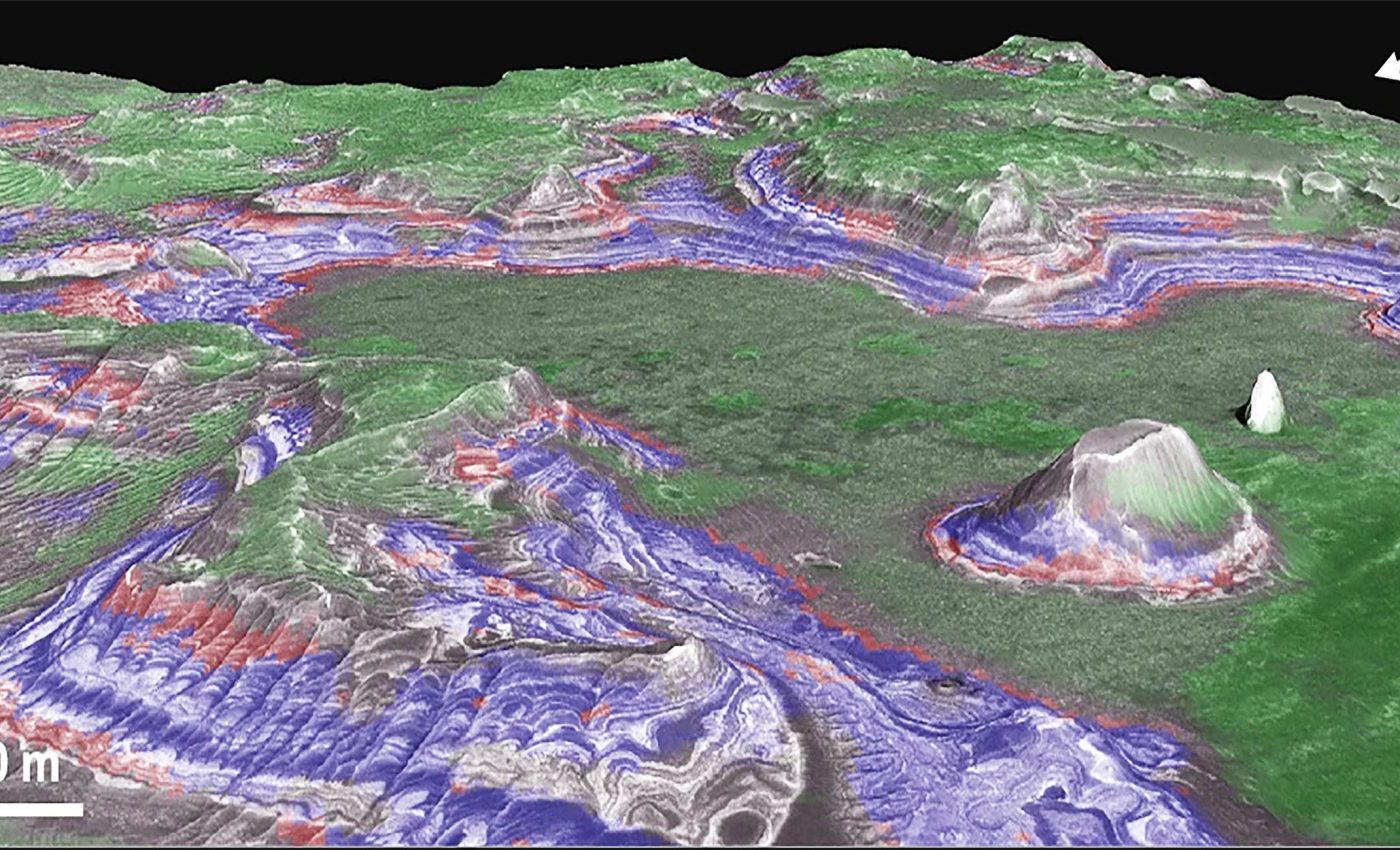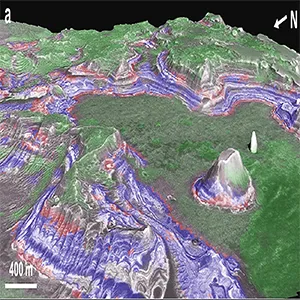
Mystery Martian mineral finally identified after decades of trying
For years a narrow spectral band on Mars kept stumping scientists. It pointed to something iron rich that did not match any known mineral.
A new study identifies that signal as ferric hydroxysulfate, a compound that forms when hydrated iron sulfates are heated in the presence of oxygen and water at about 50 to 100 C.
The find links orbital observations to lab experiments and turns a long running puzzle into a new probe of the Red Planet’s thermal past.
Ferric hydroxysulfate on Mars
The instrument that first flagged the signal is CRISM, a camera that measures reflected sunlight across many wavelengths to map surface minerals.
Lead author Janice Bishop is a senior research scientist at the SETI Institute and NASA Ames Research Center.
In spectroscopy, minerals show characteristic absorption features at specific wavelengths that act like labels in light.
A hyperspectral imager collects hundreds of narrow bands, so small differences in those labels become visible.
The stubborn band sits at 2.236 micrometers and appears in two well known regions called Aram Chaos and the plateau above Juventae Chasma.
Those locations point to complex histories involving lava, ash, or heated groundwater.
Matching that one band narrows the list of likely minerals and the conditions that created them.
When the match lands on a heated iron sulfate, it flags past thermal energy that can drive chemical reactions important for habitability.
How code was cracked
Raw orbital spectra carry dust, detector noise, and the imprint of carbon dioxide in the thin air of Mars.
The researchers applied improved calibrations and mapping algorithms to correct those effects and to isolate the odd material with higher confidence.
Sharper images showed more patches of the same signal and helped separate mixed-up layers.
This allowed scientists to spot extra features at several points in the light spectrum, which made the mineral’s identity clearer.
With that fingerprint confirmed, the lab tests started. When researchers heated common iron sulfates that contain water, they created a solid form of ferric hydroxysulfate that matched the signals seen from orbit.

Mars’ ferric hydroxysulfate recipe
Ferric hydroxysulfate formed when minerals like rozenite or szomolnokite were heated to around 100 C (212 °F) or higher.
The process happened more quickly with rozenite. The new mineral showed a clear signal that other lookalike minerals, such as jarosite or gypsum, did not.
Experiments in sealed vials showed that forming this phase requires oxygen, a clear sign of oxidation during heating.
Runs without oxygen did not produce the compound, which helps rule out some cold or dry pathways.
The chemistry also points to acidic conditions, so pH would have been low in the fluids that prepared the ground.
That combination of acidity and heat fits a hydrothermal setting where warm fluids move through rock and alter sulfates.
Could a different mineral mimic the signature. The paper compared many candidates and found none with a single narrow feature at 2.236 micrometers together with the observed overtones and electronic bands.
Revelations from Mars minerals sites
At Aram Chaos the new phase sits adjacent to and beneath monohydrated sulfates, which suggests heating from below by a local heat source.
At the Juventae plateau the thin layers lie near polyhydrated sulfates and a basaltic cap, which points to heating from nearby lava or hot ash.
Both stories place warm fluids or hot rock in contact with sulfate rich deposits. The mineral is the residue of that contact.
The mapped units are thin in places, yet the signal holds across multiple pixels and images. That consistency allowed a scattered hint to be tied to specific layers and events.
Life questions raised
Warm fluids can supply energy sources and dissolved nutrients, and they can preserve salts that trap chemical clues.
These are the kinds of environments scientists watch because they concentrate the building blocks that life uses.
None of this proves past life, and the mineral does not carry biosignatures by itself. It does provide a new way to pinpoint where heat and water once overlapped.
On Mars the timescale places the Amazonian period at roughly 0 to 3.0 billion years.
The authors infer that the heating events likely occurred within that span, so the chemistry is relatively recent in geologic terms.
That timing lines up with other signs that parts of Mars stayed active long after its surface cooled overall. Regional differences matter, but these layers record bursts of warmth superimposed on a cold planet.
What to look for next
“The material formed in these lab experiments is likely a new mineral due to its unique crystal structure and thermal stability. However, scientists must also find it on Earth to officially recognize it as a new mineral,” said Bishop.
Finding the same phase of Mars minerals in a terrestrial outcrop would allow formal naming and deeper study of its structure.
Targeted rover measurements and future sample return can also check Mars mineral layers directly and test the lab based formation pathway.
The study is published in Nature Communications.
—–
Like what you read? Subscribe to our newsletter for engaging articles, exclusive content, and the latest updates.
Check us out on EarthSnap, a free app brought to you by Eric Ralls and Earth.com.
—–













